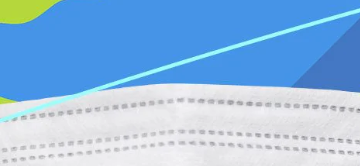Tuesday, May 19, 2020 - Toulouse. Anthropologists, physicians and tribal leaders develop a strategy for managing and containing COVID-19 among an indigenous population in lowland Bolivia.
While the global reach of COVID-19 is unquestionable, little attention is paid to indigenous populations, who are especially vulnerable to COVID-19 and associated complications. Even in high-income countries like the USA, indigenous groups like the Navajo have per capita COVID-19 infection rates rivaling those of major urban areas in New York and New Jersey.
A team of anthropologists, physicians and tribal leaders have developed a strategy for mitigating the impact of COVID-19 among the Tsimane, an indigenous population in the Bolivian Amazon. Led by four anthropologists including Jonathan Stieglitz of IAST, their multiphase plan brings together relevant stakeholders to serve Tsimane interests. They hope to provide a general template that can be applied to other indigenous populations, and to promote a wider discussion of how to adapt prevention strategies to local circumstances, with the goal of minimizing harm to indigenous populations due to the SARS-CoV-2 pandemic. Their work has been published in the journal The Lancet.
“In Bolivia, most attention is focused in the cities, where the pandemic first appeared. Indigenous communities have not been part of any organizational plan,” said Daniel Eid Rodriguez, a Bolivian co-author and physician working with the Tsimane Health and Life History Project that is co-directed by Stieglitz. “Although resources in Bolivia and other countries are too limited to create the ideal response plan, there are many people and organizations who are ready to help. Finding and building collaboration is key for the success of any COVID-19 plan.”
To reach a wider audience, the authors have published their paper not only in English, but also in Spanish, Portuguese and French — languages spoken in countries where many indigenous people reside.
The project’s research with Tsimane ceased in mid-March, as did much global research involving face-to-face interactions. Nevertheless, Tsimane project leadership recognized that indigenous groups living in remote areas are especially vulnerable to COVID-19, given their limited access to information and appropriate health care.
Building on 15 years of experience helping Tsimane access improved healthcare, the researchers initiated conversations with tribal authorities and other local officials. Together, they began working on a plan, first to inform and prepare the population, and ultimately to act once COVID-19 appears in the Tsimane territory.
Every individual around the world is vulnerable to COVID-19. But since it is relatively new and no one has developed immunity, many indigenous communities like the Tsimane are at additional risk because of pre-existing immune condiditions, including widespread respiratory illnesses, such as tuberculosis, bronchitis and lower respiratory tract infections.
According to the World Bank, over 370 million indigenous people inhabit over 90 countries worldwide, in both rural and urban areas. Though health clinics may be present in rural areas, access and resources such as medication, portable oxygen and other treatments may be very limited. In Bolivia, the local hospital will likely be overloaded by the time COVID-19 reaches Tsimane villages, and the existing remote health outposts are not yet equipped to diagnose or treat COVID-19.
While certain features of indigenous populations make them more vulnerable to COVID-19, other factors may foster resilience. Many indigenous populations maintain the ability to provide their own sustenance through farming, fishing, hunting and foraging activities. The ability to get food in self-sustaining ways — both in terms of the know-how and having use rights in native territories — makes it easier for some indigenous communities to self-isolate and reduce COVID-19 exposure that might otherwise come from visits to nearby town. Tribal sovereignty also allows indigenous groups to make their own decisions, especially when it comes to restricting access to their communities by non-residents.
The multiphase plan began taking shape before COVID-19 was confirmed in the Beni region of Bolivia, where the Tsimane reside. The plan is adapted to a low-tech, low population density environment where isolation is feasible for whole communities. The goal of Phase I was education and preparation. A mobile team of trained Tsimane visited over 60 villages for awareness campaigns, using a variety of materials such as Centers for Disease Control posters translated in the Tsimane language. During village meetings, each community came up with a specific plan for collective isolation and for quarantining suspected cases. The team also developed a list of materials needed to help with collective isolation of Tsimane communities, to minimize reliance on markets and outside merchants. Salt, for example, is used not just to flavor food, but also to preserve meat and fish. So the team made deliveries of salt and other items including soap to each community. Phase II of the plan began when COVID-19 reached the Beni department in mid-April. It focuses on COVID-19 containment and patient management. It prioritizes protecting the elderly, contact-tracing and patient monitoring. As of now, no confirmed cases have been reported among Tsimane or in the towns closest to Tsimane communities.





Add new comment